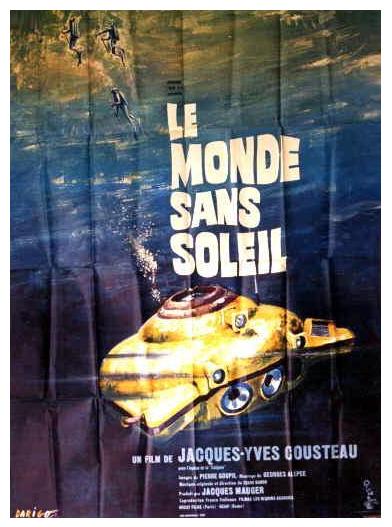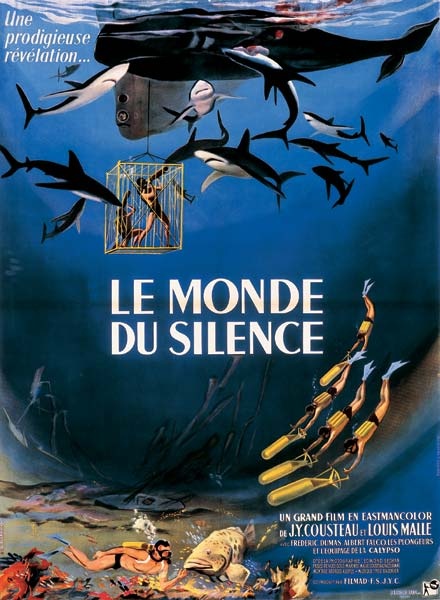September 5th, 2011 by Marc AuMarc
I recently finished watching the lectures from Sean Anderson’s Conservation Biology class on iTunes U. Compared to the last course I watched, Principles of Evolution, Ecology and Behavior, Conservation Biology is less revelatory and perhaps less interesting for a layperson, but that’s not a criticism of the course itself. Conservation Biology has a much narrower focus, which inevitably means it will have a narrower audience.
What you do get is pretty great for anyone interested in the subject. On the scientific side, concepts like island biogeography and metapopulations are covered in detail. There are also many discussions of conservation history and policy, so you end up with a good understanding of topics like the history of protected areas and the Endangered Species Act. This history helps put the current conservation thought and policy in context. There are also a number of lectures which illustrate conservation principles by focusing on a single species, which are quite excellent.
Overall, I really enjoyed this course. I would highly recommend it to anyone interested in the topic. Anyone more interested in an introduction to big ideas in science would probably find this class a little too detailed. On a practical note, the lectures aren’t numbered in iTunes and there are lectures from multiple years available. I watched the 2011 series, and a few of them appear out of sequence in iTunes, but this wasn’t an obstacle to understanding or enjoying the lectures.
Posted in Pour les Sciences, Reviews
Comment on this post.
July 25th, 2011 by Marc AuMarc
I just finished watching the lectures from Principles of Evolution, Ecology and Behavior, taught by Stephen Stearns at Yale. It’s available at Open Yale Courses as well as through iTunes U. The course includes 36 lectures, mostly about 45 minutes long and is an excellent introduction to these topics. It starts at microevolution and genetics, moves on to present macroevolution from several perspectives, leading into ecology and then a few lectures on behavior, including foraging, breeding and altruism.
It seems that many introductory biology courses available online are geared more towards pre-med students, with a focus on biochemistry and disease, while this course really is an overview of life on earth, how it evolved and how it interacts within species, across species and within the physical environment. I downloaded the lower-resolution videos through iTunes, and definitely could not read the slides. This wasn’t a problem, as it would work almost as well as an audio course, and I could still see more or less what was going on in the charts. There is a higher resolution version available at the Yale site, along with transcripts of the lectures and other materials.
Posted in Reviews
Comment on this post.
July 3rd, 2010 by Marc AuMarc
I watched this film at the Centre Culturel de Saint Martin, in French, so I didn’t understand all the narration, but I don’t think it mattered much. In fact, it was probably for the best because I was able to see the longer European version of the film. The film contains astounding underwater footage from around the world, created by the men who did Winged Migration and Microcosmos.
The camera work is amazing, and I would love to know more about their techniques. It seems that natural light is used frequently, and additional lighting is subtle, often coming from above or from the side. As a result, I found the colors surprisingly subdued. Aside from shallow footage of squid and jellyfish, there are very few warm colors in the film, even in tropical scenes where they would have been present if more artificial lighting was used. Overall, though, I think the trade-off was worthwhile. The feel of the movie is distinct and enveloping.
Even if you have seen similar footage, the quality of their shots is still thrilling. The sardine run off South Africa is particularly stunning, with large bait balls of sardine being eaten by dolphins, sharks, whales and hundreds of birds descending from above. Scenes like that of a mother walrus cradling her calf are wonderfully emotional. The four years of work that went into making this movie was well spent. Even if you think you’ve seen it all before, you’ll want to see it all again.

Posted in Reviews
Comment on this post.
June 28th, 2010 by Marc AuMarc
Le Monde Sans Soleil documents an experiment with men living underwater as “oceanauts” in a pair of underwater capsules named Conshelf Two (from Contintental Shelf Station Two) in the Red Sea. This in and of itself supplies the foundation for an amazing documentary. Additionally, there is a diving saucer with an underwater garage.
The film is from 1964, and diving technology has improved since Le Monde du Silence in 1956. Now there are wetsuits (awesome silver ones) and weight belts. In the lower capsule, at about 26 meters, the men breathe tri-mix (Helium, Oxygen and Nitrogen). In the shallower capsule at about 10 meters, the men breathe air and smoke pipes.
While there is plenty of footage of marine life, the film concerns itself primarily with the oceanauts and their fancy equipment. A future is envisioned in which Conshelf Two is merely the first step in man’s undersea colonization, where we can “systematically exploit all the resources of the oceans.” While this phrase is jarring to the modern audience, overall the scientific research techniques are less violent and destructive in this film. No dynamite is used.
Without Louis Malle, this film is not quite as strong artistically as Le Monde du Silence, but the various undersea structures make for mesmerizing footage. The grand finale is a descent in the diving saucer to 1,000 feet below sea level, passing thousands of years of ancient corals into a world where light barely reaches.
It’s another must-watch film that is just a cut below Le Monde du Silence. While the US and USSR were in the heat of the space race, Cousteau was undertaking his own verison in the ocean. While saturating diving and undersea habitations are used now in commercial diving, undersea colonization never really took off. Still, it is fascinating to see the oceanauts lay the foundation for this colonization in a time when it seemed like a perfectly logical thing to do.

Posted in Reviews
Comment on this post.
June 4th, 2010 by Marc AuMarc
My Family and Other Animals is Gerald Durrell‘s memoir (or actually, one of them) of his childhood on the Greek island of Corfu. I had read it as a child, and I’m happy to report that it remains engaging and entertaining over twenty years later.
Durrell moved to Corfu with his eccentric family at the age of eight, and spent most of his time observing and capturing the local wildlife. The book is evenly split between accounts of his outdoor adventures and anecdotes about his family and other residents of the island. He is excellent at capturing the wonder and excitement of being a young naturalist. In fact, probably better than anyone else I have read. The hijinks of his family and other characters are generally hilarious, and recounted from the perspective of an eight-year-old, which results in a very natural deadpan style.
Durrell went on to become a zookeeper, conservationist and host of television documentaries. His concept of the zoo as primarily a “stationary ark” rather than an amusement park was ahead of it’s time. My Family and Other Animals recounts the boyhood fascination with nature that continued throughout his life. This book is a must-read for nature lovers, and I think would be quite enjoyable for almost anyone in general.
Thanks to D$ for the book and bringing down to Saint Martin. Also, if you like it, you’re in luck. He’s written loads more books, including two others that chronicle his time on Corfu.
Posted in Reviews
Comment on this post.
May 19th, 2010 by Marc AuMarc
Le Monde du Silence, or The Silent World, is a 1956 film directed by Jacques-Yves Cousteu and Louis Malle. It won the Palme d’Or at Cannes and the Oscar for Best Documentary. But you know all that.
There are many striking aspects to the film. One is that it is beautifully shot, perhaps the most artistic underwater documentary ever made. Also, scuba diving itself was still in its infancy. The equipment and safety standards were quite primitive by today’s standards. Unfortunately, they also do horrible things to some of the animals, which is probably why it is very hard to get a copy of the movie.
Despite the lack of a modern environmentalist sensibility, the film is probably the most important film in all of diving. For millions, it was the first glimpse at the underwater world. Cousteau and his team were true pioneers, not only old school exploring (which they did), but developing equipment and doing serious research. For the modern viewer, it’s amazing just to see how much sea life there was back then.
I’ve deliberately omitted references to specific scenes. Each is fascinating, and to give away the details would diminish the sheer awe of seeing this film for the first time. Suffice to say, there are whales, dolphins, sea turtles and many, many fish. There are also Frenchmen in speedos, pipes and lots of red hats. It is a documentary of not only the undersea world, but the people who explored it.
I don’t think Cousteau ever matched the brilliance of this film, and his later works became increasingly less shocking as they came to reflect more modern techniques and attitudes towards diving and environmentalism. Le Monde du Silence is where it all started, and of all the undersea documentaries made in the fifty years since, none has been more important.

Posted in Reviews
Comment on this post.



